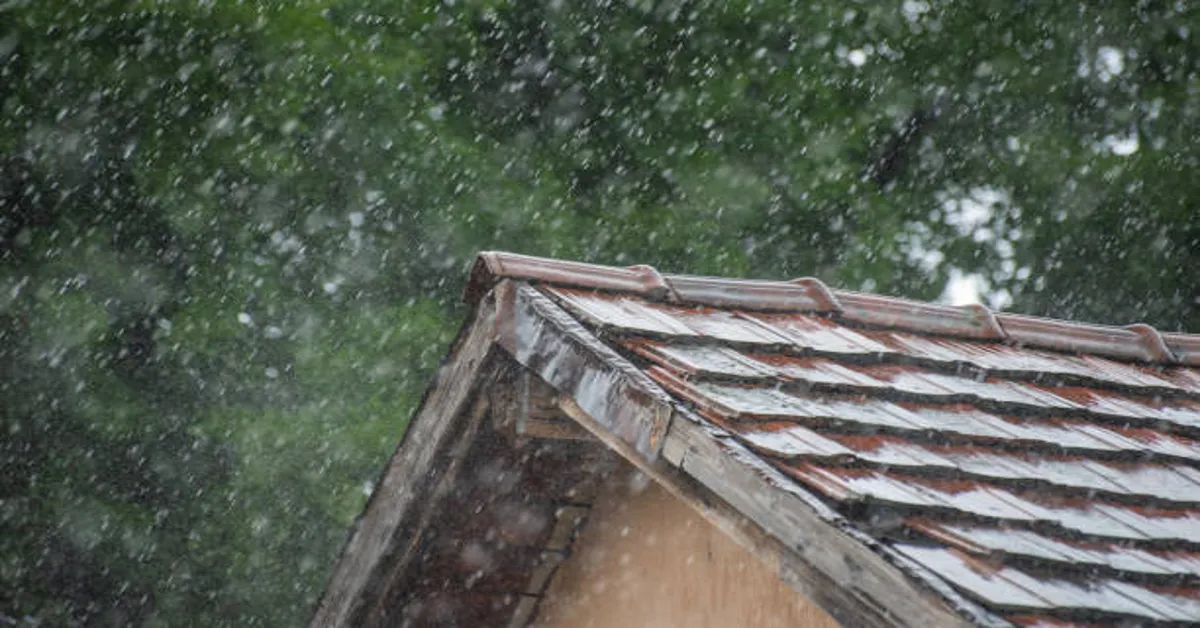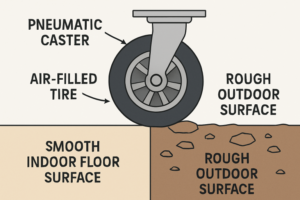Hailstorms can devastate your roof in a matter of minutes, leaving behind damage that isn’t always immediately visible from the ground. After experiencing a severe hailstorm, many homeowners make the critical mistake of assuming their roof is fine simply because they don’t see obvious signs of damage from their yard. However, hail damage often manifests in subtle ways that require a trained eye to detect.
The stakes are high when it comes to identifying hail damage quickly. According to the National Weather Service, hailstorms cause over $1 billion in property damage annually in the United States, with roofing systems bearing the brunt of this destruction. Missing or delaying the identification of hail damage can lead to water infiltration, structural deterioration, and costly repairs that could have been prevented with timely action.
Understanding what to look for during a post-hailstorm inspection is crucial for protecting your investment and ensuring your family’s safety. This comprehensive guide will walk you through the essential signs of hail damage, proper inspection techniques, and the steps you should take to address any issues discovered. Whether you’re dealing with minor surface damage or significant structural concerns, knowing how to identify and document hail damage properly can make the difference between a successful insurance claim and an expensive out-of-pocket repair.
Understanding Hail Damage Patterns and Severity
Hail damage varies significantly depending on the size of the hailstones, wind speed, and the duration of the storm. Hailstones ranging from pea-sized (quarter-inch) to softball-sized (four inches or larger) can cause different types and degrees of damage to your roofing system. Understanding these patterns helps homeowners recognize what to look for during their inspection.
Small hail (under one inch) typically causes surface-level damage that may not be immediately apparent. This type of damage often appears as granule loss on asphalt shingles, small dents in metal components, or minor bruising that weakens the shingle’s protective barrier. While this damage might seem cosmetic initially, it compromises the roof’s ability to shed water effectively and can lead to premature aging.
Larger hail (one inch and above) creates more obvious damage patterns. These storms can crack shingles, dent gutters and downspouts, damage flashing, and even puncture roofing materials entirely. The impact force from large hailstones can also loosen or completely remove shingles, exposing the underlying decking to the elements.
Wind-driven hail creates unique damage patterns that often concentrate on specific areas of the roof. The windward side of your home typically receives the most severe impact, while areas protected by dormers, chimneys, or other structures may show less damage. Professional contractors from Pickle Roofing Solutions report that understanding these patterns helps homeowners focus their inspection efforts on the most vulnerable areas.
Inspecting Asphalt Shingles for Hail Damage
Asphalt shingles, the most common roofing material in North America, show hail damage in several distinct ways. The first and most obvious sign is the loss of protective granules that give shingles their color and weather resistance. After a hailstorm, you may notice an unusual amount of granules in your gutters, downspouts, or scattered around your home’s foundation.
Exposed asphalt mat is another critical indicator of hail damage. When hailstones strip away granules, they expose the underlying asphalt layer, which appears as dark spots or streaks on the shingle surface. This exposure accelerates weathering and makes the affected shingles more susceptible to cracking and water penetration.
Cracking represents more severe hail damage and requires immediate attention. Hail-induced cracks may appear as straight lines, star patterns, or irregular tears in the shingle material. These cracks often occur along the edges of shingles or at stress points where the material is thinner or more flexible.
Bruising is perhaps the most subtle form of hail damage on asphalt shingles. Bruised areas feel soft or spongy when pressed gently and may not be visually obvious initially. However, bruised shingles have compromised structural integrity and will fail prematurely, making early identification crucial for proper documentation and repair planning.
Examining Metal Roofing Components
Metal roofing systems, gutters, downspouts, and flashing require special attention during post-hailstorm inspections. These components show hail damage through visible denting, which can range from barely perceptible dimples to significant deformations that affect functionality.
Gutters and downspouts often bear the brunt of hail damage and serve as excellent indicators of the storm’s severity. Dents in these components are usually easier to spot than roof damage and can help you gauge whether your roof likely sustained damage as well. Pay particular attention to the lips and edges of gutters, as these areas are most vulnerable to hail impact.
Metal flashing around chimneys, vents, and roof penetrations frequently shows hail damage through denting or displacement. Damaged flashing compromises your roof’s water-shedding ability and can lead to leaks if not addressed promptly. Look for dents, creases, or areas where flashing has been pushed out of position.
For homes with standing seam metal roofing systems, inspect the flat areas between seams for denting patterns. While these roofing systems are generally more hail-resistant than asphalt shingles, severe storms can still cause functional damage that affects the roof’s performance and longevity.
Safety Considerations and Inspection Techniques
Safety should be your top priority when conducting a post-hailstorm Pickle Roofing roof inspection. Never attempt to climb onto a damaged roof, especially when wet conditions may be present. Instead, use binoculars or a spotting scope to examine your roof from the ground, focusing on areas that are clearly visible from different vantage points around your property.
Walking around your home’s perimeter provides valuable inspection opportunities without the risks associated with roof access. Look up at the roof from multiple angles, paying attention to any obvious damage patterns, missing shingles, or debris accumulation. Take photographs of any suspicious areas for documentation purposes and future reference.
If you must access your roof for a closer inspection, ensure you have proper safety equipment and favorable weather conditions. Use a sturdy ladder with proper positioning (one foot away from the wall for every four feet of ladder height), and never inspect alone. Consider hiring professional inspectors who have the experience and equipment necessary to safely assess hail damage.
The optimal timing for roof inspections is within 24-48 hours after a hailstorm, weather permitting. This timeframe allows for initial damage assessment while ensuring that evidence of the storm’s impact remains clear and uncontaminated by subsequent weather events or natural settling.
Common Areas Where Hail Damage Occurs
Certain areas of your roofing system are more susceptible to hail damage due to their exposure, materials, or structural characteristics. Understanding these vulnerable zones helps focus your inspection efforts and ensures comprehensive damage assessment.
The following areas typically sustain the most severe hail damage:
- South and west-facing roof sections that receive direct storm impact
- Ridge lines and peaks where wind acceleration increases hail velocity
- Areas around roof penetrations where flashing and sealants are present
- Gutters, downspouts, and exterior trim components
- Skylights, vents, and other roof-mounted equipment
Roof edges and eaves deserve special attention during inspections, as these areas often show the first signs of water infiltration following hail damage. Check for loose or missing shingles, damaged drip edge, and compromised fascia boards that may have been impacted by large hailstones.
Chimneys and their surrounding areas frequently sustain hail damage due to their elevation and exposure. Inspect chimney caps, spark arrestors, and flashing systems for dents, cracks, or displacement. Damaged chimney components can allow water penetration and should be addressed promptly to prevent interior damage.
The transition areas where different roofing materials meet, such as where shingles connect to metal flashing or where dormers intersect with the main roof, are particularly vulnerable to hail damage. These joints rely on proper sealing and overlap to prevent water infiltration, and hail impact can compromise these critical connections.
Interior Signs of Roof Damage
While exterior inspection is crucial, don’t overlook interior signs that may indicate hail damage has compromised your roof’s integrity. Water stains on ceilings or walls, particularly those that appear shortly after a hailstorm, suggest that your roofing system has been breached and requires immediate attention.
Attic inspections can reveal damage that isn’t visible from inside your living spaces. Look for water stains on rafters or decking, damp insulation, or signs of recent moisture intrusion. Use a flashlight to examine areas directly beneath suspected damage locations, and check for any unusual drafts or light penetration through the roof structure.
Changes in your home’s energy efficiency following a hailstorm may indicate roof damage that has affected insulation or created air leaks. If you notice sudden increases in heating or cooling costs, damaged roofing components may be compromising your home’s thermal envelope.
Documentation and Insurance Considerations
Proper documentation is essential for successful insurance claims and future reference. Photograph all suspected damage from multiple angles, including close-up shots that clearly show the extent and nature of the damage. Include reference objects like coins or rulers to provide scale, and ensure that timestamps and location information are recorded with each image.
Create a detailed written inventory of all damaged components, including their approximate age, condition before the storm, and current state. This documentation supports your insurance claim and helps contractors provide accurate repair estimates. Keep all storm-related receipts, including those for temporary repairs or emergency services.
Contact your insurance company promptly to report potential hail damage, even if you’re uncertain about the extent of the damage. Many policies have specific timeframes for reporting claims, and delays can complicate the process. Be prepared to provide detailed information about the storm date, your observations, and any temporary measures you’ve taken to prevent further damage.
Professional inspections and estimates from qualified roofing contractors provide valuable support for insurance claims. Navigating insurance claims for roof damage requires careful documentation and professional expertise to ensure fair settlement and proper repairs.
Working with Professional Inspectors
While homeowners can identify obvious hail damage, professional inspectors bring expertise and experience that can reveal subtle damage that might otherwise go unnoticed. These professionals understand the nuances of different roofing materials, can safely access all areas of your roof, and provide detailed documentation that supports insurance claims.
When selecting a professional inspector, choose contractors with specific experience in hail damage assessment and strong local reputations. Verify their licensing, insurance coverage, and Better Business Bureau ratings before allowing them access to your property. Be wary of door-to-door solicitors who appear immediately after storms, as legitimate contractors are typically busy with existing customers during these periods.
Professional inspectors use specialized tools and techniques to identify damage that may not be visible to untrained eyes. They can assess the structural integrity of damaged components, evaluate the remaining useful life of affected materials, and provide detailed reports that support repair or replacement decisions.
A recent case study from the Dallas-Fort Worth area illustrates the value of professional inspection. Following a severe hailstorm in 2023, a homeowner initially saw no obvious damage and delayed professional inspection. Three months later, minor granule loss identified by a professional inspector led to the discovery of widespread shingle deterioration that qualified for full roof replacement under the homeowner’s insurance policy.
Frequently Asked Questions
How soon after a hailstorm should I inspect my roof?
You should conduct an initial inspection within 24-48 hours after the storm, weather permitting. This timing allows you to assess damage while evidence remains clear and uncontaminated by subsequent weather events. However, prioritize safety over speed, and wait for safe conditions if the weather remains severe.
Can I inspect my roof myself, or do I need a professional?
While you can conduct a preliminary inspection from the ground using binoculars, professional inspection is recommended for comprehensive damage assessment. Professionals have the safety equipment, experience, and knowledge to identify subtle damage that untrained eyes might miss. They can also provide documentation that supports insurance claims.
What size hail typically causes roof damage?
Hail as small as one inch in diameter can cause significant damage to asphalt shingles, while smaller hail may cause granule loss and surface damage. However, damage depends on multiple factors including wind speed, hail density, roof age, and material quality. Even smaller hail can cause damage to older or lower-quality roofing materials.
How long do I have to file an insurance claim for hail damage?
Most insurance policies require prompt notification of potential claims, typically within one year of the damage occurrence. However, specific timeframes vary by policy and state regulations. Contact your insurance company as soon as you suspect damage, even if you’re uncertain about the extent of the damage.
What should I do if I find hail damage on my roof?
Document the damage with photographs, contact your insurance company to report a potential claim, and arrange for professional inspection and repair estimates. If damage is severe or threatens interior protection, make temporary repairs to prevent further damage, but avoid permanent repairs until your insurance adjuster has assessed the damage.
Taking Action After Hail Damage
Identifying hail damage quickly and accurately is crucial for protecting your home and ensuring proper insurance coverage. The key to successful post-storm recovery lies in systematic inspection, thorough documentation, and prompt professional assistance. Remember that hail damage often appears subtle initially but can lead to significant problems if left unaddressed. By following the inspection guidelines outlined in this article and working with qualified professionals, you can ensure that your roof receives the attention it needs to continue protecting your home for years to come. Don’t wait for minor damage to become major problems – take action immediately when hail damage is suspected.
About Pickle Roofing Solutions
Pickle Roofing Solutions specializes in comprehensive roofing services with over 15 years of experience serving homeowners throughout the region. We provide expert hail damage assessment, storm damage restoration, and complete roofing system installations including asphalt shingle replacement, metal roofing systems, and emergency repair services. Our team of certified roofing professionals combines technical expertise with extensive knowledge of insurance claim processes to deliver superior results for storm-damaged properties.
We pride ourselves on thorough damage assessment, quality workmanship, and exceptional customer service throughout the restoration process. Our experienced inspectors have helped over 2,000 clients navigate hail damage claims and achieve successful outcomes with their insurance providers. From initial damage assessment through final installation, we guide homeowners through every step of the roof restoration process.
Contact Pickle Roofing Solutions today to discuss how our storm damage expertise can help you restore your roof to optimal condition. Schedule a professional inspection to learn more about our comprehensive roofing services and how we’ve helped clients achieve successful insurance claim outcomes and long-lasting roof protection.
| Business Name: | Pickle Roofing Solutions |
| Address: | 1333 W McDermott Dr # 200, Allen, TX 75013 |
| Phone number: | (972) 954-7186 |









